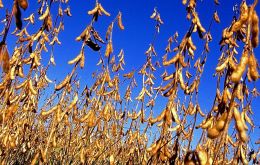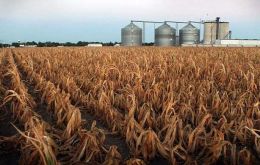MercoPress. South Atlantic News Agency
Tag: drought
-
Tuesday, April 7th 2020 - 07:48 UTC
Central Chile drought has residents and mining companies clash over water rights

With historically low river flows and reservoirs running dry due to drought, people in central Chile have found themselves particularly vulnerable to the coronavirus pandemic. Years of resource exploitation and lax legislation have allowed most reservoirs in that part of the country to run dry.
-
Thursday, May 30th 2019 - 08:37 UTC
Australia's drought conditions to persist for at least three months, forcing wheat import

Hot, dry weather will persist across Australia's east coast for at least another three months, the country's weather bureau said on Thursday, in a forecast that threatens to severely crimp agricultural production.
-
Tuesday, August 21st 2018 - 08:04 UTC
Emus flock to towns as Australia continues to struggle with extreme drought

Large numbers of emus have been flocking to an outback mining town in New South Wales as Australia continues to struggle with extreme drought. The flightless birds are desperately searching for food and water in Broken Hill, local animal rescue services say.
-
Thursday, May 3rd 2018 - 08:44 UTC
Uruguay´s soybean crop forecasted to drop 43% because of devastating drought

Due to the recent devastating drought, soybean production in Uruguay is forecast to drop to 1.7 million tons in 2017-18, according to an April 30 Global Agricultural Information Network (GAIN) report from the U.S. Department of Agriculture.
-
Wednesday, April 11th 2018 - 09:21 UTC
Drought will cost Argentina's herd up to a million head

Argentina’s herd will shrink by up to 1 million head of cattle next year as ranchers facing scorched pastures after the worst drought in decades decide to slaughter females rather than grow their herds, analysts said.
-
Friday, March 16th 2018 - 10:18 UTC
Macri announces debt relief for farmers struggling with drought

Argentine President Mauricio Macri said the government would provide some debt relief to farmers struggling through what he described as the country’s worst drought in 40 years, which has resulted in dramatic cuts to soybean and corn crop outlooks.
-
Friday, March 16th 2018 - 10:14 UTC
Dry summer cuts Argentina's soy crop to 40m tons; US$ 4.6bn negative impact on the economy

Argentina's Rosario Grains Exchange slashed 14% off its forecast for the country's soy crop on Thursday, saying a drought now in its fourth month would limit the harvest to 40 million tons versus its previous estimate of 46.5 million. Argentina has been suffering dry weather since last November.
-
Friday, January 5th 2018 - 10:25 UTC
Drought in north Argentina seriously delaying plating of soy and corn

The drought in Argentina continues in several regions and has generated a delay of planting for the 2017-18 season. A report authored by the institution AgroEducación indicated that La Niña, though subtle, already impacts the region with temperatures above normal and scarce rains.
-
Friday, May 22nd 2015 - 10:21 UTC
El Niño could again disrupt global food markets later this year

A strong El Niño is likely to increase prices of staple foods such as rice, coffee, sugar and cocoa, say scientists. Forecasters agree that the El Niño effect, which can drive droughts and flooding, is under way in the tropical Pacific, but they say it is too early to say how severe it will be.
-
Tuesday, September 18th 2012 - 06:41 UTC
Soy, corn and wheat futures with record drops in Chicago on improved yields of US crop

US soybean futures tumbled on Monday trading posting their biggest percentage drop in nearly one year, on selling sparked by anecdotal accounts of better-than-expected yields in the Midwest farm belt.
